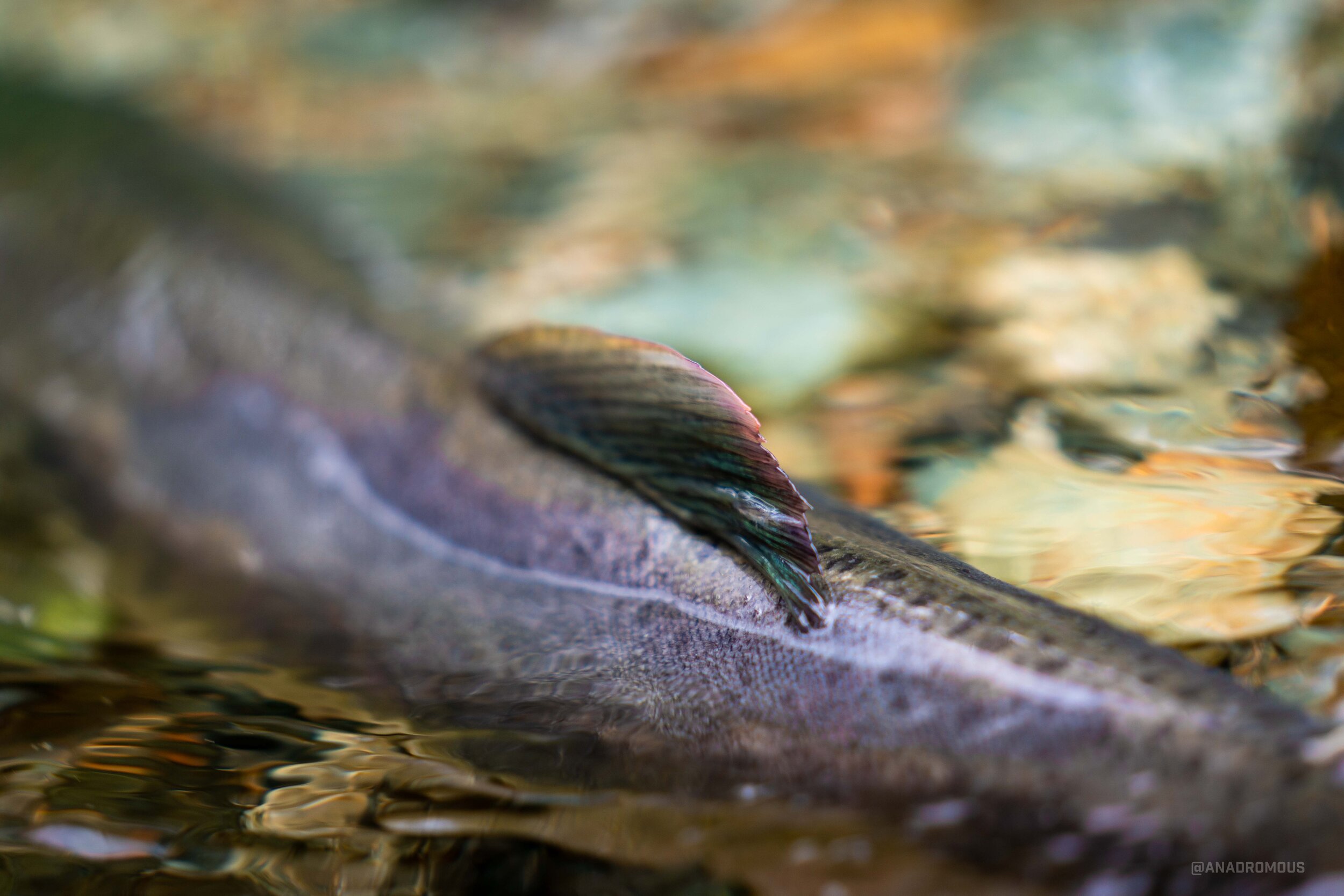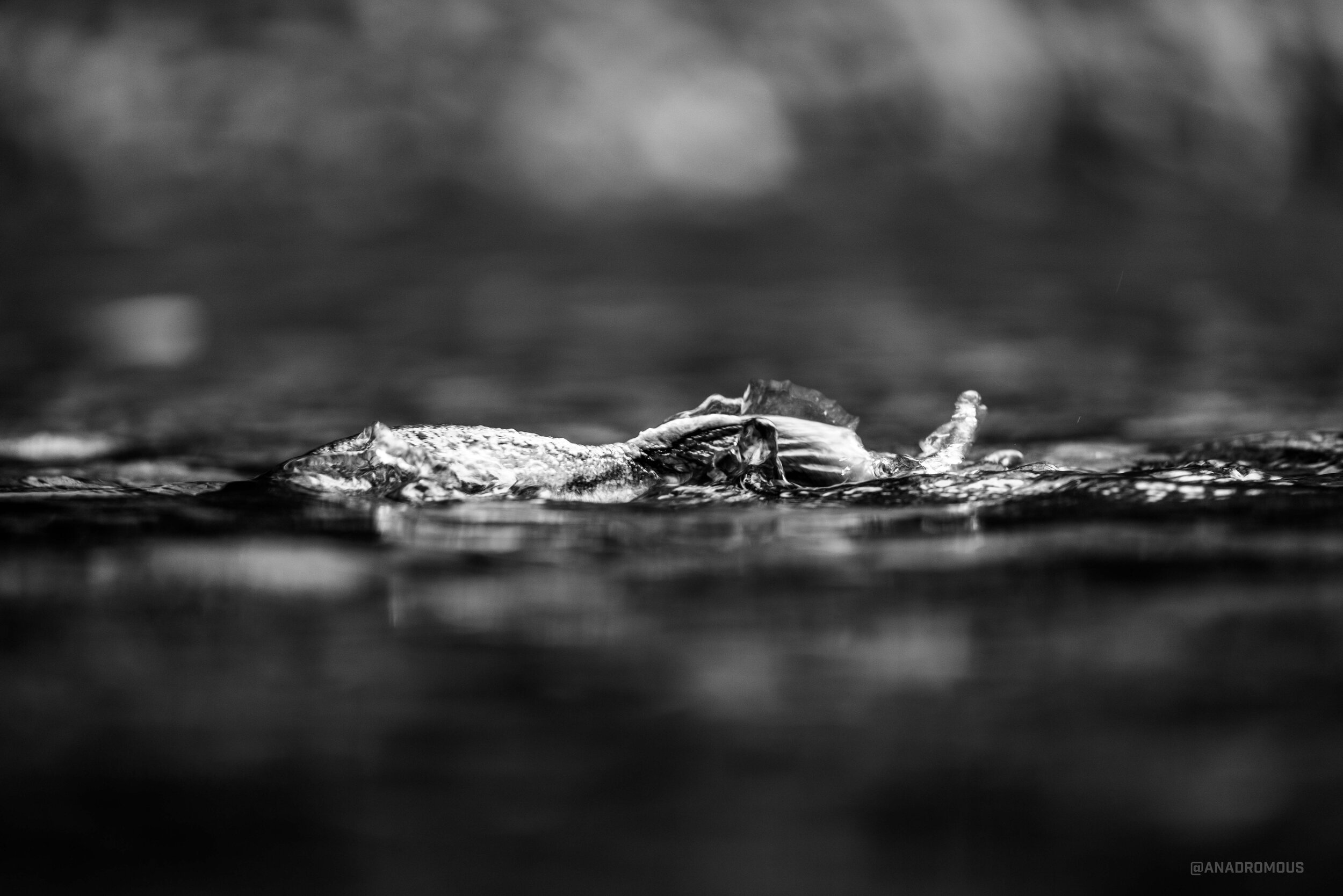Note: This article was originally written for Flylords Magazine - Follow them and see the original post here.
Howdy, folks. Here to talk to you about the most abundant (and arguably the most fun) of the five main types of Pacific salmon to catch on a fly rod: the pink salmon.
Let’s get the most obvious thing here out of the way... What’s up with the hump? Well, upon reaching fresh water during their spawning migration, male pink salmon develop a pronounced humped back. The females somehow dodged that evolutionary bullet. This hump grows as a result of a reactive-increase in the amount of connective tissue and the growth of free interneural spines and neural spines. Hence the nickname "humpies". In fact, the scientific name of pink salmon ends with “gorbuscha”, which literally translates to “humpie” in Russian.
In the Pacific Northwest (and other select places around the world), there are millions of pink salmon (pinks) running through estuaries and up into freshwater to spawn. This is a special type of salmon run, in that it only happens every other year, depending on location. In Southern BC for example, adult pinks return during odd-numbered years, while northern rivers will have their peak runs in even-numbered years. This two-year timing is because pink salmon have a strict two-year lifecycle. Adult pinks enter spawning streams from the ocean, usually returning to the exact same stream where they originated. How they find their way back after two years in the ocean without Google Maps - no idea.
While living in the ocean, pink salmon are silver (or chrome, as many passionate Canadians would say). During the fall spawning migration, adult males will undergo their changes in morphology. This means that when they reach fresh water, the humped back, darkened colors, and a slightly-hooked jaw (also known as a “kype”) will develop, while females remain relatively normal in body shape and color.
After the spawn, the pink fry are hatched in freshwater streams, rearing for several months before migrating towards the ocean. Along the way, they encounter their fair share of predators. If the fry can’t make it to the estuary during daylight, they’re believed to hunker down in gravel for an evening before continuing on their journey to the salt. After spending two years in the ocean, pinks migrate back to their natal freshwater streams to spawn and die, typically within days of spawning. And thus the beautiful cycle continues.
Random fact: sometimes pink and chum salmon interbreed to form the hybrid known as the (sterile) miko salmon.
Pinks are a great fish to catch on a fly rod with lots of harvestable meat. People ask me why I don’t personally retain pink salmon, and my answer is typically two-fold; in river fishing (where I most frequently fish), these animals have already started to decompose from an active enzyme triggered throughout their bodies, but also, releasing fish is just too damn fun. I’m personally much more likely to retain chinook (AKA king salmon) on ocean fishing outings. Personal preference, I suppose.
That said, in terms of conservation status, pink salmon are considered to be critically imperiled in California, and imperiled in Washington. However, in Alaska and British Columbia, they’re considered secure. This year, in our local fisheries of Southern BC, retention of the species was closed earlier than expected as the return numbers weren't as high as conservation/government agencies had hoped. The truth is - and I don’t want to dip into politics - we need to do more to raise awareness, protect our watersheds and conserve threatened salmon runs.
Science aside, when it comes to connecting with a pink salmon on a fly rod, if you catch one, you can expect to catch many, because they generally travel in large schools (queue the taco-rod-bend-a-thon).
For the most part, pinks chase flies without hesitation, making them one of the easier species of salmon to catch on a fly rod. And as far as salmon go, they’re not massive fish, so typically 6-8wt single handers can get the job done. Although if you’re the two-hander type like myself, spey your hearts out, friends. My go-to setup as of late is a Hatch 7 Plus or an Islander LX on a 13’3” 7wt Winston KAIROS, with the Scientific Anglers Deliverance line system. Don’t go too heavy with sink tips, because these fish love to travel in soft water.
Fly selection is all about size and visibility with these fish. Keep in mind, they typically run during the freshet (runoff), so the water generally isn’t very clear for their run. And since they like to run in softer water, I prefer smaller bead-head flies in bright pink or chartreuse with ample amounts of flash. For bigger, faster water, you can bump up the sizing.
While you may get a ton of hookups if your timing in the run is right, manage your excitement because these fish have a particular knack for spitting your barbless hook out of their rather-boney mouths. Tail-in-hand or not, they’re a great fish to usher new people into the sport with almost-guaranteed smiles.
Relative to the other types of salmon, pinks and chinook generally run early, followed by coho sockeye and chum, which are also fun to target on the fly. Check out Fishing BC for beta and inspo on when and how to target other anadromous species in our area like coho and chum. They have a ton of great info for travelling anglers.
And if you’re in our neck of the woods of Southwest BC and want to get on the water, there are some great outfitters to get you out there safely and quickly into fish, such as Valley Fishing Guides (give them a follow to stay up on fishy news in the area).
So now that you’re a pink salmon wizard, start planning that BC trip for 2021 and dial in that spey cast. If we can take care of our fisheries, there will be plenty of fish to go around.
------------------
Disclaimer: Chase is not a biologist, or any kind of scientist, really. He’s a passionate BC-based photographer, outdoorsman and fly angler. All of the information in this post is casual information that he has acquired from time on the river, intended to inform people about a rapidly depleting resource. Feel free to shoot him a note with any thoughts or fact-checks you have to chase@chasewhite.com - he’s always game to chat.

















